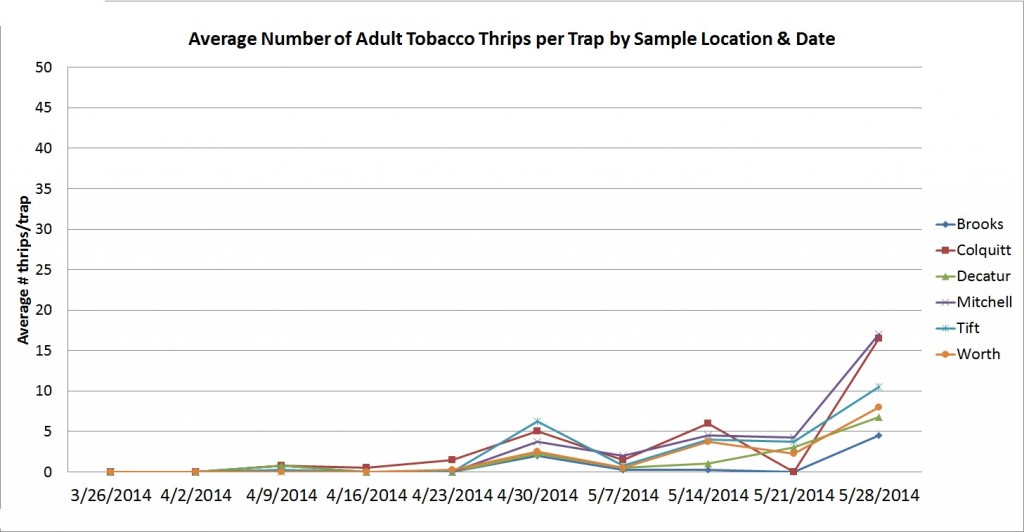Thrips have been moving over the last week, and trap numbers did reflect the increased activity. In terms of actual thrips pressure in peanut, we are seeing a lot of variation from field to field in our research trials. One of our tests planted on 5 May has heavy thrips feeding damage in nearly all the treatments while a test planted on 13 May with no insecticide treatment has almost no damage. Other trials fall somewhere in between the two extremes. How much of these differences are related to time of emergence and/or exposure to some very heavy rainfall events is not known. We collected thrips samples from all our trials in Tift County over the last two days. Though the samples have not been processed, there are immature thrips present on the plants.
There are no economic thresholds for thrips in peanut. Decisions about foliar insecticide applications will need to be based on the condition of the plants, the presence of immature thrips, and an individual grower’s tolerance for damage. As we saw last year in many fields, peanuts can recover from significant thrips injury if conditions are favorable for growth. Growers may want to consider availability of irrigation and presence of or potential for herbicide injury when making up their minds about whether or not to spray thrips.
These data are being provided for informational purposes only and may not be representative of thrips dispersal at your location. Peanut fields should be scouted regularly to quantify actual thrips populations.
If you have questions about thrips or thrips management please contact your local county Extension agent.
*See 22 April post for a map of trap locations.
